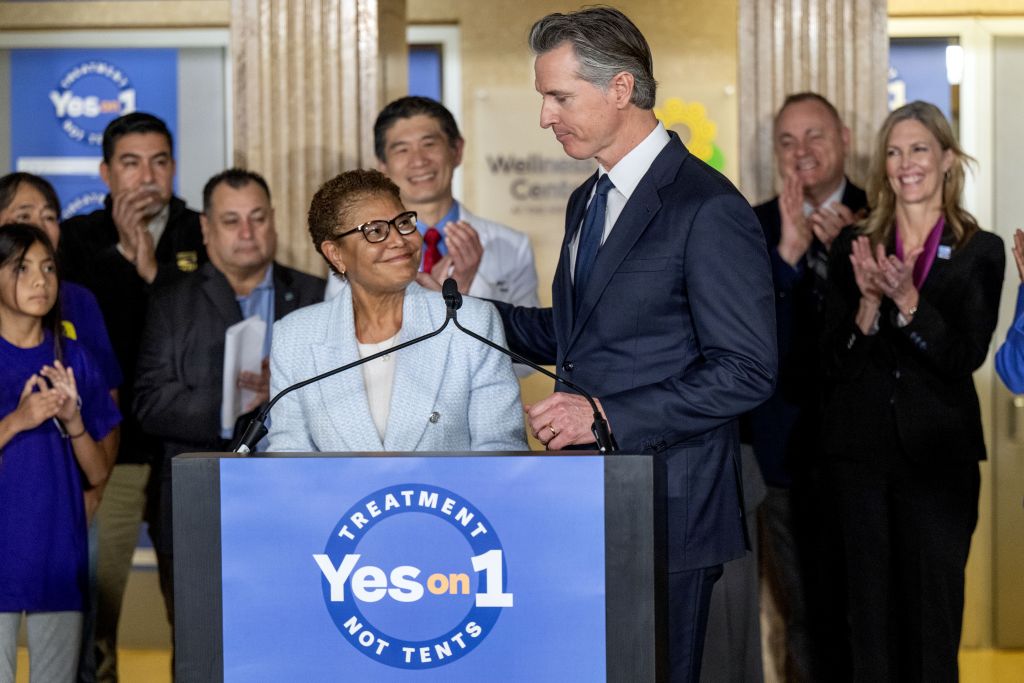The Pathfinder: Ballot Measures – An Important Form of Direct Democracy

With the major party nominees for president all but assured following the March 12 primaries, it’s tempting to think that politics will be rather uneventful until the fall. The truth is, our political system never rests, and that’s particularly true for the scores of statewide and local ballot measure campaigns currently underway across the country.
Ballot measures, sometimes called initiatives or referendums, have been a staple of our civic life since at least the 17th century when New England town meetings used an early form of direct democracy to debate and approve resolutions, ordinances, and amendments.
Most of today’s ballot measures still address local issues like public schools, property taxes, and day-to-day governance. Statewide measures often deal with similar policy areas. But it’s increasingly common for issues of national concern to appear on state ballots – and sometimes, for state ballot measures to drive the national policy debate.
Ballotpedia is currently undertaking a massive research effort to assemble a complete historical record of every ballot measure that has been on every state’s ballot. This body of work will provide an unparalleled resource for researchers, reporters, and the voting public on how ballot measures have evolved, the issues they’ve covered, and the role they have played in our civic life.
Our research has uncovered a number of things; Among the most important being how ballot measures serve as both a window into voters’ thinking about issues over time, and voters’ willingness to use ballot measures to experiment with public policy and governance.
California voters have a history of doing just that. A 1978 ballot question called Proposition 13 that cut and capped the state’s property tax rates helped spark a so-called “taxpayers revolt” and led to more states considering ballot measures to limit taxes and spending.
And while ballot measures seeking to implement term limits for various elected officials date back to the 19th century, it wasn’t until 1990, when California, Colorado, and Oklahoma voters approved measures term-limiting state lawmakers (and members of Congress, in Colorado’s case) that a nationwide term limit effort took shape.
Some issues have relatively long histories on statewide ballots, including abortion, same sex marriage, and marijuana legalization.
Voters have been deciding marijuana-related ballot measures since California’s Proposition 19 in 1972. Interest in legalizing medical marijuana gained steam in the late 1990s. Measures legalizing recreational use became more frequent starting in 2012, following successful legalization measures in Colorado and Washington.
In 1970 – three years before the U.S. Supreme Court’s Roe v. Wade decision, voters in Washington approved Referendum 20, which made abortion legal in the state. Abortion was on the ballot 54 times from 1970 to 2023. But these measures took on greater national interest following the Supreme Court’s 2021 ruling in Dobbs v. Jackson Women’s Health Organization that overturned Roe.
Florida voters will decide on both abortion and marijuana this year, pending a decision from the Florida Supreme Court: Amendment 3 – which would legalize marijuana – and Amendment 4, which would add abortion rights to the state constitution. Voters will also decide abortion amendments in Maryland and New York, and campaigns are gathering signatures to put abortion rights measures on the ballot in Arkansas, Arizona, Colorado, Missouri, Montana, Nebraska, Nevada, and South Dakota.
Sometimes ballot measures are used to repeal legislation (a veto referendum) or to overturn ballot measures previously approved.
In Alaska, voters will decide on a measure to repeal ranked-choice voting (RCV). In 2020, voters adopted Measure 2, which created an electoral system that combines open top-four primaries with RCV for general elections. Alaska was also the first state to vote on a ranked-choice voting ballot measure in 2002, rejecting the idea 64% to 36%.
Campaigns supporting ranked-choice voting measures are currently underway in Colorado, Idaho, Missouri, and Montana.
In 2020, Oregon voters passed Measure 110, which decriminalized drug possession and encouraged drug treatment over incarceration. Four measures that sought to repeal Measure 110 were gathering signatures to get on this November’s ballot. But the Oregon Legislature beat supporters to the punch, passing legislation to criminalize possession of most illegal substances. Governor Tina Kotek (D) said she will sign the bill.
Another area where voters have decided major policy issues through ballot measures is same sex marriage. Between 1998 and 2012, voters in 30 states approved measures (mostly constitutional amendments) banning same sex marriage. The U.S. Supreme Court’s 2015 ruling in Obergefell v. Hodges nullified these state-level bans. California voters will decide on an amendment that would formally repeal the same sex marriage ban they approved in 2008.
The history and evolution of ballot measures can tell us a lot about voters’ changing attitudes, policy preferences, and leading concerns. Sometimes, those concerns are purely practical. Other times, they become movements that reshape the political landscape. What will this year’s ballot measures tell us about voters’ concerns and attitudes? That will have to wait until November. Until then, Ballotpedia will continue to follow these ballot questions from conception to election.
The Pathfinder is a monthly column written by Leslie Graves, founder of Ballotpedia, for Preserving Democracy. Exploring topics vital to our understanding of American civics and Democracy, The Pathfinder attempts to cut through the noise of political journalism while exploring issues of vital importance to the American voter.





